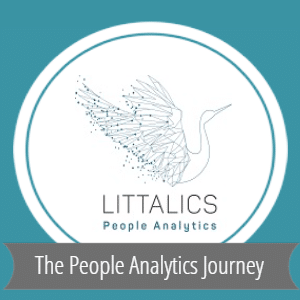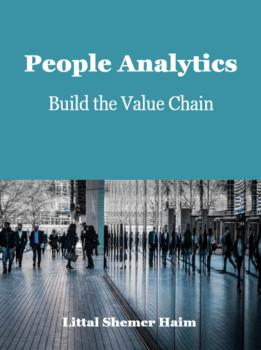In the last couple of months, HR executives and experts have witnessed a transformative revolution, with the relentless advance of AI casting a profound impact on traditional talent management practices. Most HR leaders believe adopting and implementing AI solutions is necessary to prevent lagging in organizational success. However, in conversations with clients and prospective trainees in People Analytics, I keep receiving questions that express their puzzlement. In their exploration of AI, HR professionals seem to confound HR operations, People Analytics, and organizational readiness for AI. In other words, the objective, the methods, and the means are mixed and mismatched.
I believe that the HR sector profoundly influences business success in the era of AI. However, the first step is to distinguish between AI impacts on HR to be able to address each successfully. In this article, I described three distinguished effects of AI on HR and explained how they are interrelated. To conclude, I elaborated on the implications for the People Analytics practices in the organization and contemplated how it eventually changed The People Analytics Journey.
The Means: HR Operations
HR operations encompass the core management and administration functions of HR processes. From the technological perspective, it includes platforms and solutions that ensure the smooth functioning of the HR department, e.g., HRIS, ATS, C&B, L&D, etc. The emergence of AI changes the HR tech landscape, offering new advantages.
The apparent advantage of AI is that it automates repetitive and time-consuming tasks, freeing HR professionals to focus on higher-level work. However, a more prominent advantage is the visions of data democratization and data consumerization that take shape. When AI is implemented into HR tech, managers can easily access records and information about their people to run the business, and employees can use their data for growth, well-being, and positive experiences at work.
While HR Operations alone are insufficient for strategic People Analytics, they are necessary. HR data strategy can be described as a funnel through which you pour business questions and extract actionable insights. HR processes impact the business, hence the questions, but also define the data collected. Therefore, the evolution of HR tech goes hand in hand with People Analytics.
The Methods: People Analytics
People Analytics as professional practices and organizational function is constantly evolving, as is its dual definition. People Analytics can refer to both the corporate function within which data collection, analysis, and translation occur and the practices that draw on employee data to inform decision-making processes throughout the organization. As the progress of algorithms and data sources hits the domain of employee, organization, and work, new workforce-related recommendations are generated.
The People Analytics domain leverages AI to generate recommendations that help the organization anticipate and address workforce challenges. It serves various stakeholders, from management to team leaders to employees, to turn data points from different processes into insightful action plans to execute the talent strategy. It helps managers at all levels to make better decisions about their work and how they can support their teams. It also enables them to evaluate the impact of interventions or actions on business results.
Machine Learning (ML) and Large Language Models (LLMs) enable practitioners and vendors of People Analytics platforms to do so much more to support informed decisions related to people. However, two fundamentals remain in the new frontiers of AI: First, we must ensure that the organization picks the proper algorithms and data for achieving both competitive advantage and thriving employees. Secondly, we must continue our conversation with organizational sponsors to leverage the new techniques to new business challenges. The emergence of AI changes the competitive environment, and hence, the importance of People Analytics expands and takes new directions.
The Objective: Organizational Readiness for AI
Leaders in organizations have always asked who are the people that can execute the business strategy. The emergence of AI forces them to keep asking this question to remain competitive: Who can create new products, find new efficiencies, adapt to a changing business environment, delight customers, build a great workplace, and attract others to join the organization? So, the traditional question remains, but we need to find new answers in the era of AI.
To understand the skills of the future and lead the organization towards a new mixture of skills, roles, and responsibilities, we must adapt new tools and techniques that will enable us to monitor skill demands, e.g., critical thinking and data literacy, develop these skills at scale, and create a culture that values and rewards these skills. The skills demand in the AI era changes the HR department’s focus and pushes it to more operations automation and more valuable insights in its People Analytics services.
Implications for People Analytics Leaders
As a People Analytics expert, there are several things you can do to support your HR department to be ready for AI in talent decision-making. Start by analyzing the employee lifecycle and identify areas of talent decision-making that can benefit from AI, e.g., candidate screening, job matching, career path planning, and learning—research to identify gaps and evaluate vendors of AI tools that can support decisions.
Keep educating yourself. Assess the skills and knowledge of your team to determine if they have the necessary expertise. Ensure you are not lag, but keep up with training opportunities to help you acquire the skills needed to work with AI tools and algorithms. An essential part of your learning path is related to AI ethics to ensure the new AI tools are free from bias and other risks.
Involve HR professionals in this journey to ensure they are comfortable using AI tools. Partners with other departments, e.g., Finance, Procurement, IT, and Legal, to develop a plan for implementing AI tools in the HR department, including timelines, budgets, and key performance indicators (KPIs) to measure success.
Changing The People Analytics Journey
I created my lectures and courses in People Analytics to enable HR leaders to improve business performance by making informed decisions about people based on data. I decided to cover real-world use cases of analytics to help HR leaders become familiar with data science terms and concepts, understand the competencies needed, and develop a proper analytical mindset.
For a few years, I’ve followed a conceptual loop describing how the People Analytics domain developed. It starts with the fundamental changes, elaborates on the role of the People Analytics leader, then demonstrates case studies and simulations, and ends up with emerging trends and ethics. In the face of how AI changes work, organizations, HR practices, and People Analytics, the content of my syllabus continues to evolve. However, the loop structure remains more relevant and practical than ever and is excellent for supporting your organization on this journey.







